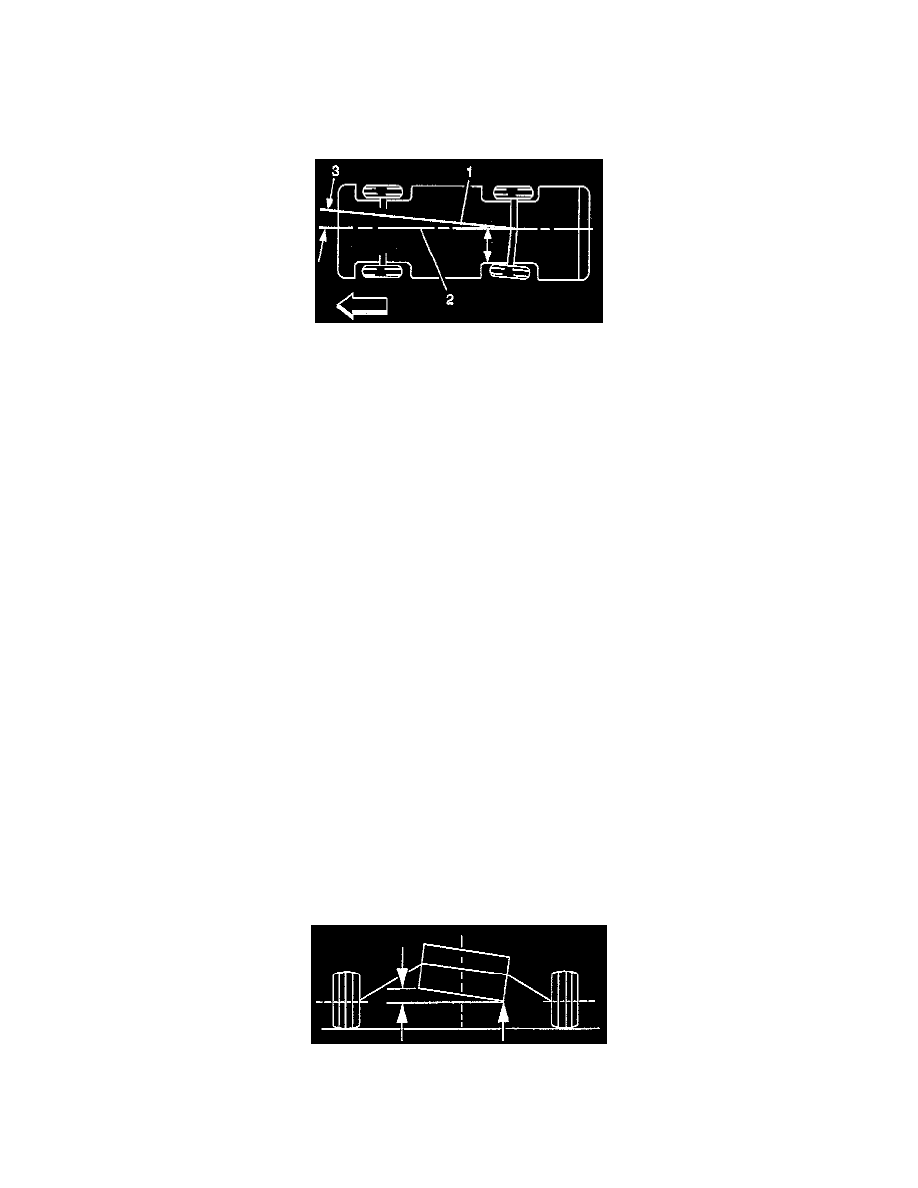Grand Prix V6-191 3.1L VIN M SFI (1998)

Setback applies to both the front and the rear wheels. Setback is the amount that one wheel spindle may be aligned behind the other wheel spindle. In the
illustration, the left side frame (1) is moved toward the rear, causing a misalignment. Setback may be the result of a road hazard or a collision. The first
clue is a caster difference from side-to-side of more than one degree.
Thrust Angles Description
The front wheels aim or steer the vehicle. The rear wheels control tracking. This tracking action relates to the thrust angle. The thrust angle is the path
that the rear wheels take. Ideally, the thrust angle is geometrically aligned with the body centerline (2).
In the illustration, toe-in is shown on the left rear wheel, moving the thrust line off center. The resulting deviation (3) from the centerline is the thrust
angle (1).
Pre-Alignment Road Test W/Customer
Perform a road test on the vehicle with the customer. The road test may help to identify many faulty parts:
-
Worn control arm bushings or strut bearings
-
Weak strut dampeners
-
Loose power steering gear mounts
-
Wheel bearings
-
Tires
Obvious conditions must be brought to the customer's attention before beginning an alignment. A waddle feeling in the back of the vehicle often
indicates the occurrence of a bent rim and/or a belt shift in one of the rear tires. Vibration in the steering wheel or in the floor pan is often the result of
static imbalance or radial runout of the front tires.
Alignment Rack Maintenance
Adjust the rack for level and for calibration according to the manufacturer's recommended intervals. Refer to the alignment rack manufacturer's operators
guide for information regarding the adjustment.
Lead/Pull Description
Lead is the deviation of the vehicle from a straight path on a level road, without hand pressure on the steering wheel. Lead is usually the result of one
of the following conditions:
1. Tire construction. Refer also to GENERAL DESCRIPTION in TIRES.
2. Uneven parking brake adjustment. Refer to PARK BRAKE CABLE SERVICE/ADJUSTMENT in BRAKES.
3. Wheel Alignment
The way in which a tire is built may produce lead. Rear tires do not cause lead.
Torque Steer Description
A vehicle pulls or leads in one direction during hard acceleration. A vehicle pulls or leads in the other direction during deceleration.
The following factors may cause torque steer to be more apparent on a particular vehicle:
-
A slightly smaller diameter tire on the right front increases a right torque lead. Inspect the front tires for differences in the brand, the construction,
or the size. If the tires appear to be similar, change the front tires from side-to-side and retest the vehicle. Tire and wheel assemblies have the most
